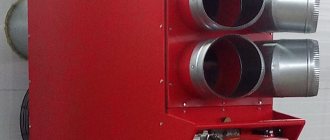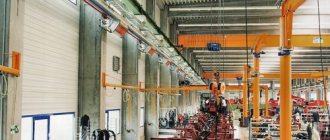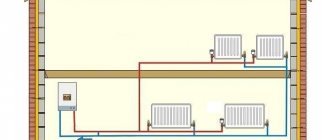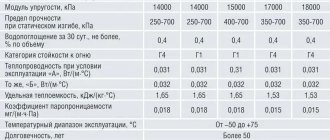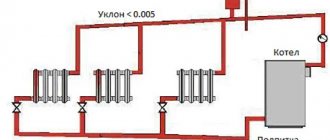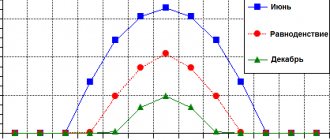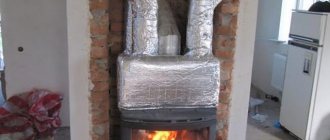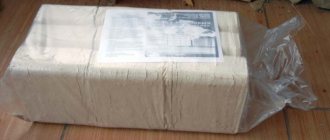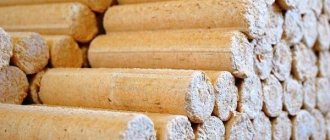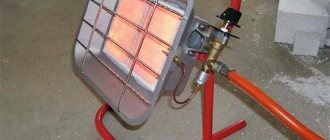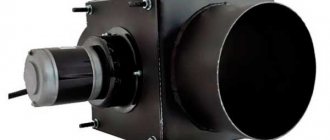More about briquetting technology
At the beginning of the last century, Russian researcher A.P. Veshnyakov proposed pressing the fine fraction into elements of a certain shape and size, which in terms of heat transfer were not inferior to the coal itself. The idea has found wide application both in everyday life and in industry.
Coal briquettes on a screening belt
Today, pressed coal is classified depending on the material, environmental friendliness, security, shape and type of packaging. But the two main types are:
- For production with the addition of binding components.
- For home use without additives.
It is important to know that industrial briquettes should absolutely not be used in everyday life. When they burn, a large amount of toxic substances are released, for which special equipment is responsible for removing them under production conditions. Previously, additives in the form of molasses or starch were used in the production of household briquettes. But this technology is a thing of the past.
Briquetting coal at home
Industrial technology is not suitable for briquetting coal at home. The high price of equipment for the production of coal briquettes, high energy costs, and the need to obtain a huge number of permits from government agencies significantly increase the cost of the finished product. But for the purpose of heating a small private house, there is no need to organize large-scale production. To make 3-4 tons of briquettes (winter stock), it is quite possible to make do with improvised means.
Equipment for briquetting at home
The simplest method, which was well known to our great-grandfathers
:
- Coal dust is mixed with clay in a ratio of 10:1 with the addition of a small amount of water to form a thick mass. Clay is a safe binding component that will prevent the briquettes from falling apart. It is important to thoroughly mix all the components of the mixture. A construction mixer is often used for this purpose.
- Next, the solution is poured into molds. These can be either special containers or used equipment (old pots, buckets, boxes). If there are no containers, coal cakes can be formed by hand, as our ancestors did.
- After complete drying, the briquetted coal can be sent for storage.
Despite the fact that, according to production technology, the mixture is dried, during the home preparation of briquettes the mixture is moistened. In this case, homemade coal briquettes have the following distinctive features
:
- Imperfect shape.
- Different levels of humidity and, therefore, heat transfer.
- Low strength, which does not allow briquettes to be transported.
Homemade coal briquette
But these properties do not prevent low-cost products from burning well, especially compared to caked dust. This option is much more convenient and practical.
And if you still want to automate the process somehow, then you can follow the example of home craftsmen and independently make equipment similar to production equipment:
- A machine that allows you to make briquettes manually. Instructions on how to make a machine can be easily found on the Internet. A unit designed for home brick production is well suited for manual pressing. The materials that allow welding the frame are a profile pipe and a 40*40 mm corner. A receiving hopper is mounted on top. A manual mechanism is attached to the side for briquetting the mixture into rectangular or cylindrical products. Technology
: Raw materials are crushed as much as possible. The fine fraction ensures the strength and quality of the briquette. - Adding water will create a sticky mixture. It is acceptable to add clay in small quantities to slightly increase the ash content of the fuel.
- Next, the mixture is poured into a hopper, from where the mold is filled. The briquette is extruded by pressing a lever.
- The reverse movement of the lever causes the briquette to be pushed out of the mold. It is removed and placed in the sun to dry.
- Thick-walled steel pipe for making the body. It is machined inside according to the desired screw size.
Technology for manufacturing coal briquettes without a binder
It is better to entrust the manufacture of the body, matrix, and auger to a good turner. It is important that the pulley diameters ensure a screw rotation speed of no more than 200 rpm. The motor must be grounded before connecting it to the household electrical network.
Production technology
:
- The raw materials are crushed and mixed with water.
- With the engine running, the mixture is loaded into the hopper.
- The emerging “sausages” are cut into pieces of the desired length and laid out on a rack to dry.
It is important to know that the presence of through holes in finished briquettes promotes better combustion and greater heat transfer.
Types of briquettes
Let's figure out what types of briquettes for heating exist and their components. There are several types of such briquettes:
- wood briquettes;
- peat briquettes;
- briquettes from hard coal.
Let's take a closer look at each type of fuel.
Wood briquettes
This type of briquettes is made from sawdust and other materials - waste from the wood processing industry. The raw materials are first heated and then pressed. To do this, use high pressure on the chips. Under pressure from the load, the wood releases lignin. It acts as glue. After it hardens, the mass does not lose its shape and is quite durable to the touch. Lignin is a natural material and does not cause any harm to the human body. Wood briquettes have some important characteristics. Fuel moisture content is 10%. As you can see, the moisture content of the finished material is several times lower than wood. At the moment of combustion, sawdust releases 4400 kcal/kg. If we compare this indicator and heating with sawdust with burning coal, we note that the indicator is 3910 kcal/kg.
Wood briquettes
The density of wood is not the same, it all depends on the original type of wood from which it was obtained. It is also important that when a wood heating briquette is burned, a small amount of ash remains. Its figure does not exceed 0.12%. While coal leaves behind 20% ash. Wood briquettes for heating are convenient because there is no crackling sound during combustion and they do not produce a spark. The formation of smoke is minimal and at the same time this type of fuel is capable of releasing heat into the room for several hours. A completely wood block burns out in 4 hours. If you do not remove the ash and coals, you can use them for cooking.
The most important thing about this type of fuel is that heating with sawdust with your own hands is safe in all respects for humans.
If you compare it with coal, when burned, wood produces several times less carbon monoxide than other materials. The form in which wood blocks are produced is convenient in practice. This allows you to not take up a lot of space for fuel storage. Euro firewood is suitable as fuel not only for solid fuel boilers. They can be used to start a fire outdoors and to light a fireplace. Also, firewood in the form of wood blocks is easy to control consumption.
Fuel briquettes can be used for cooking on the grill
You can calculate how many blocks you need to heat a certain area. Knowing this value, you can easily determine the volume of fuel purchased for the season. Remember, when buying solid wood, you pay not only for the material, but also for water and air. As you can see, heating with pressed sawdust is not only profitable from an economic point of view, but also safe in terms of health. You also have the opportunity not to cut down forests and other green spaces in order to heat your house with sawdust.
Peat briquettes
Peat briquettes are produced similarly to wood briquettes. The peat is initially dried and pressed. If peat is exposed to high temperatures, it begins to compact and turn into blocks. This form is convenient for storing and delivering cargo. Peat briquettes can be used to heat all types of stoves. This type of fuel is characterized by high thermal output over a long period of time. As you can see, peat briquettes for heating are another option for replacing solid wood for heating premises. If your boiler allows you to regulate the air supply, then the burning time of peat blocks increases to 8 hours.
Coal for heating
Peat briquettes
This fuel will be a good replacement for another fuel option for heating rooms at night. At this time of day, it is important for you to keep the air temperature in the room at a level comfortable for normal life. Let us remind you once again about the form. Peat briquettes for heating are small in shape for easy transportation and for heating the stove. In order for the boiler to constantly heat the water, it is enough to add new briquettes at regular intervals.
Ash after combustion of peat briquettes can be used as fertilizer for phosphorus feeding of plants on the site.
This fertilizer alternative will appeal to many gardeners. Let's figure out what is more profitable - firewood or pellets. To buy a ton of peat blocks, you have to pay approximately 6,000 rubles. A ton of firewood of any type of wood costs 2,000 rubles. Let's recalculate the heat transfer rates of these materials. It turns out that 2.4 kWh/kg comes from firewood and 5 kWh/kg comes from burning pellets. As you can see, it is much more profitable to purchase artificial fuel. Also, the practicality of peat briquettes lies in the fact that there is no need to chop firewood into convenient logs, dry them and allocate large areas for storage.
Coal briquettes for heating - types, characteristics and features
In a period of growing energy crisis and rising prices for basic coolants, an alternative type of fuel can be considered as one of the ways to solve the problem.
But at the same time, few people pay attention to classic energy sources - firewood and coal. The latter, in terms of its energy characteristics, may be the best option for heating a private home or even organizing a mini-boiler room. But for greater efficiency, pre-processing of the material is necessary, and in particular, the production of fuel briquettes.
History of this fuel
Coal briquettes are far from new to the fuel market. The Brockhaus and Efron dictionary also provides a detailed description of the production of coal briquettes. They use coal dust or fine fuel fractions that are not suitable for coking. To create a dense mass, coal tar was used, which was added in a minimal amount. Subsequently, the resulting mixture entered a mechanical mold, which formed a briquette. This production process was used in the late 19th century.
Nowadays
The modern market for the production of coal briquettes is rather chaotic. Small production lines, the production technology for which is clearly amateur in nature. In most cases, this is due to simple ignorance of this product and poor quality of the product from some manufacturers.
The production technology that exists today directly depends on the type of coal. But in most cases it happens like this:
- Preparation of the base material (coal dust, charcoal, etc.) – grinding and drying.
- Adding a binder.
Traditionally, bitumen additives have been used for this purpose. When heat is added, they begin to foam and the main fuel is added to this mass. The process is quite simple, but the resulting product, when burned, releases a large amount of carcinogenic substances.
Some manufacturers may use polyvinyl acetate (PVA). It is absolutely safe to use and has good chemical parameters.
Adding polyethylene is one of the most economical and affordable production methods. Polyethylene waste can be used as a starting material, but without containing additional impurities.
Pressing and surface treatment
To maintain the shape of the briquette, maximum compression of the substance is necessary - pressure treatment. For this purpose, special machines are used, the pressure in which reaches 100 MPa. At the same time, the surface of the briquette is fired to form a waterproof crust. In many ways, this process is similar to the production of wood briquettes. There may also be various forms of products, which directly depend on the parameters of the installations.
Fuel types
Several types of coal can be used to produce briquettes:
Brown
The most common type of coal. Moreover, it is one of the cheapest. Coal dust or small fractions of fuel are often used.
Characteristics:
- Calorie content – 5800 Kcal/kg.
- Ash content – 12%
- Cost – 7500 rub./t.
Coal or wood
The advantage of this briquette is that production is independent of the remoteness of coal deposits. Charcoal obtained by heat treatment of various types of wood is used as fuel. In terms of production, this technology is more expensive, as it requires additional equipment. But due to the large variety of raw materials and their low cost, the final product is more than affordable.
Characteristics:
- Calorie content – 6500 Kcal/kg.
- Ash content – 12%
- Cost – 8600 rub./t.
Anthracite
Initially, anthracite coal has good heat transfer parameters during combustion. Therefore, fuel briquettes made from it are considered the most effective.
Characteristics:
- Calorie content – 6900 Kcal/kg.
- Ash content – 11%
- Cost – 9500 rub./t.
Tips for choosing coal briquettes
One of the disadvantages of coal briquettes is their high hygroscopicity - the ability to absorb moisture. In this case, its structure is destroyed, which leads to the reverse formation of coal dust. Therefore, before purchasing, you should pay attention to the protective surface - be it a firing layer or a plastic film.
Binders
These can be played by various components that influence the properties and quality of the final product.
Such components include:
- protein;
- coal tar;
- lime;
- clay;
- dextrin;
- soda;
- resin;
- molasses and others.
Note! The exact binder that should be used depends solely on the specific type of base raw material, as well as on how high quality it (the raw material) is.
In addition, the production technology itself may vary somewhat (including in terms of labor intensity) depending on the use of a particular substance.
Types of coal briquettes
For high-quality heating of the room, the type of coal briquettes is of great importance. All products are divided into subtypes depending on the material of manufacture, shape, type of fastening material and packaging containers.
Type of raw materials used to make briquettes:
- anthracite is the highest quality and most expensive coal that meets high heating requirements;
- charcoal - made from recycled wood. The quality is slightly inferior to anthracite;
- brown coal is the cheapest of all offered. Its production involves small fragments and dust of coal. The heat transfer is lower than that of the first two types.
The safety and quality of use is determined by the binder:
- coal tar;
- clay;
- soda;
- syrup;
- protein;
- lime;
- dextrin;
- liquid glass;
- cement, etc.
Anthracite is used to make coal briquettes.
For domestic use, you need to choose briquettes based on natural binders, for example, protein or molasses. For industry, fuel based on cement or resin is suitable, because... Often, production facilities have special collection systems for harmful fumes.
The shape of the products depends on the method of coal pressing. The stamp press produces cylinders with holes, bricks, “pads” or “tablets”. An extrusion machine produces “sausages” with calibrated holes.
Industrial production
Distinctive features of dust and fine coal fraction: low specific calorie content and density. But these materials are considered as cheap raw materials that make it possible to organize the production of coal briquettes. The products will have good density and heat transfer at low cost.
To produce briquettes in a factory, a special production line is used, consisting of a crusher, dryer, and press. The movement of semi-finished products between machines is ensured by a conveyor belt.
Pressed coal without additives is produced in several stages
:
- Grinding raw materials to a particle size of 6 mm and smaller.
- Drying the mixture to 15% humidity using steam and gas dryers.
- Next, the dust is cooled and fed to a stamp-type press, which acts on the mixture under a pressure of 20-150 MPa (depending on what technology is used). After this processing, the finished briquettes are sent to the finished product warehouse for storage.
The purpose of the fuel and the equipment used are the main factors influencing the size of the particles, the level of humidity and the amount of pressure under which they are turned into briquettes. At the same time, the energy intensity of the finished product directly depends on the quality of the raw materials. It is important to use the fine fraction of anthracite, and not brown or other types of coal. For strength, it is permissible to add mineral or organic additives.
Coal briquetting press
Coal briquettes can be compressed in two ways
depending on what briquetting equipment is used:
- Stamp press. The heated coal mixture is filled into special molds, in which it is compressed with a force of 100-120 MPa. After cooling, the briquettes are packaged. The finished product looks like bricks or cylinders with holes, and may look like “tablets” or “pads.” This manufacturing method is suitable for the production of briquettes in large quantities due to the high energy and financial costs.
- Extrusion machine. In this case, the plastic coal mass is pressed through the matrix by a press. A screw-pressed briquette (pini-key) made from coal dust has a cylindrical shape, resembling a “sausage”, with a calibrated hole in the middle. The technology is less expensive, but also less productive.
The technology for producing briquettes for industrial use involves the addition of cement, oil-bitumen mixture, liquid glass and others. The use of these substances in metallurgy is permitted. But you cannot buy coal briquettes with oil bitumen for heating a living space according to the requirements of the SES.
The UgleSbyt trading house not only sells (supplies) a wide range of coal products, but also independently produces coal briquettes from anthracite coal.
The coal briquettes we produce are ideal for heating residential premises, for heating boilers and solid fuel boilers. Their high combustion duration greatly simplifies boiler maintenance. Coal briquettes are also widely used for heating railway cars, construction trailers (and other cabin trailers), utility rooms and greenhouses.
| Net calorific value | Briquette dimensions | Ash content | Sulfur content | Volatile output | Humidity |
| 6100 kcal/kg | 65 × 50 × 35 mm | 15–16% | Up to 1.2% | 5–6% | Up to 7–9% |
The quality of our products fully complies with established requirements and technical specifications, which is confirmed by documentation (quality certificate). At the same time, coal briquettes made from anthracite coal differ from other types of fuel in several features:
- stability and high burning duration of at least 4–5 hours (if you have a suitable heating device and skills in handling briquettes, the burning duration can be increased to 13 hours);
- combustion does not require strong draft, due to this, the efficiency of boilers and furnaces increases by 20–25% due to the lack of heat removal and complete combustion, porous structure and low humidity, lack of caking and the need to “work with a poker”;
- low ash content, smokeless;
- complete combustion and absence of carbon monoxide, thanks to the porous structure (briquettes burn completely in one combustion cycle);
- compliance with European environmental requirements for the content of sulfur, phosphorus, etc.;
- homogeneous chemical composition and standardized sizes;
- absence of losses and screenings during transportation and storage, thanks to the calibrated sizes and strength of the briquettes.
In total, the above advantages of briquettes allow the buyer to save up to 40% of money compared to using coal of similar calorific value.
Coal briquettes are sold in 25 kg bags and 1 ton big bags, with delivery or pickup. Coordination with the client is carried out for each order separately, depending on the duration of the contract, monthly supply volumes, method of transportation and payment terms.
Coal briquettes can be purchased wholesale and retail by calling us by phone or sending a request by email.
Trading house "UgleSbyt". Anthracite coal wholesale and retail. Phone: (495) 128-00-97, mobile, Email (e-mail): This email address is being protected from spambots. You must have JavaScript enabled to view it.
YOU MAY ALSO BE INTERESTED IN:
Long-flame coal, grade DO
Anthracite coal grade ASh
AK grade anthracite coal
How can you make briquettes from coal with your own hands?
It is impossible to implement industrial technology at home. The reasons are the high price of equipment for the production of coal briquettes, high energy costs and the need to coordinate their actions with local authorities. But the owner of a private house does not need to launch a large-scale production in order to provide heating for the home. It is enough to produce 3-4 tons of coal briquettes, which will be enough for the whole winter.
Pressed coal in briquettes can be obtained in two ways:
- weld a machine for forming briquettes from rolled metal and extrude the products manually;
- assemble a screw press with your own hands to briquet coal fines using the extrusion method.
In both cases, it will not be possible to achieve characteristics close to those of factory-made fuel. But you can successfully heat your house by burning homemade briquettes instead of coal dust, which is much more convenient and practical.
Pressing by hand
For manual extrusion, a machine well known to many craftsmen for making bricks at home is suitable. Its frame is welded from profile pipes and angles 40x40 mm, and a receiving hopper is installed on top. A manual mechanism for pressing products into a rectangular shape is attached to the frame. A drawing of a homemade press for manual coal briquetting is shown in the figure:
The rectangular shape used to make bricks can be replaced with a cylindrical one, and plugged tubes can be placed inside so that there are through holes in the products. They are needed for better combustion of a charcoal briquette made by yourself.
The technology for manual coal briquetting looks like this:
- You need to try to grind the raw materials. The smaller the fraction, the stronger and better quality the homemade briquette will be.
- Pour in a little water and stir until the mixture sticks together with your hands. Some home craftsmen add clay as a binder, but this will lead to an increase in the ash content of the fuel.
- Pour the mixture into the hopper, and from there fill the mold. Press out the briquette by pressing the lever.
- During the reverse stroke, the lever pushes the product out. Afterwards it should be removed and placed in a sunny area to dry. Pressing details are shown in the video:
Home packaging of solid fuel
The process of artisanal briquetting differs from what occurs in a factory in its low level of mechanization and in the fact that instead of drying the original components, they are wetted. For the heating needs of a standard private house, you do not have to organize a grand production with serious energy costs and expensive equipment. It is possible to prepare three or four tons of economical solid fuel for the autumn-winter period using old-fashioned methods.
Stages of home briquette production:
- Coal dust is taken in pure form or with clay additives in a ratio of 10:1 and diluted with water until the required density is obtained. A safe clay binder prevents the destruction of finished briquettes, but increases the ash content. High quality mixing allows you to use a construction mixer.
- The prepared forms are filled with a homogeneous solution. Both special containers and pots, buckets or used containers are suitable for this. Briquettes can simply be sculpted by hand, as they did before.
- Finished products are dried and stored in storage areas.
Homemade coal briquettes differ from factory ones in disadvantageous qualities. They have an imperfect shape, different levels of humidity and heat transfer, and low strength, which makes transporting products difficult. But this does not prevent homemade coal briquettes from being economical and easy to use, having low cost and high calorific value. These advantages distinguish them favorably from caked dust.
When creating equipment similar to industrial equipment, a press for producing homemade bricks is taken as a basis. It will be improved with a loading hopper and a device for forming briquettes in the form of bars, pillows or cylinders. If you provide for the formation of through holes, this will promote better combustion and increase the heat transfer of finished products.
You can do pressing at home
The technology for handicraft pressing of briquettes looks like this:
- Coal dust and substandard materials are thoroughly crushed, and the final strength indicators depend on this.
- The raw materials are mixed with water and clay until a viscous and sticky consistency is obtained.
- The mass is loaded into the hopper and, by pressing a lever, it is squeezed out, filling the mold.
- When the lever moves back, the finished briquette is pushed out, removed and laid out in the sun to dry.
The production of a machine for home briquetting of charcoal using the extrusion method should be entrusted to a professional turner. You will have to pay a considerable amount for materials and labor for manufacturing the housing, matrix and screw, but the productivity of such equipment will also be higher.
Features of the briquetting process
Briquetting is the production of material fractions of different sizes, to which some binders are added. This structure is pressed into granules of a special shape. The direct process of creating briquettes is universal. Its technology is considered the most energy-efficient. Recycled and recycled metal fractions make it possible to reduce the cost of creating a charge. In addition, the widespread use of briquettes improves the quality of products and reduces their cost. The use of recycled materials in metallurgy is as relevant as the question of where to buy high-quality ceramic tiles.
Processing waste into briquettes and pellets is an effective method of reducing the consumption of iron ore raw materials by 10% when smelting one ton of industrial cast iron. Briquetting technology also takes into account gas and dust emissions that are generated during standard methods of preparing coke raw materials for smelting. In comparison with the complexity of these processes, ordering an interior design project seems elementary. When equipping the metallurgical complex zone with briquetting equipment, the profitability of producing briquettes can reach 200%.
Laying and pressing the resulting mass
Using a small bucket, the resulting mass is placed in all 4 compartments of the press, the jack with platforms is lowered down. It is necessary to understand that the compartments must be filled to capacity. After the press has completed its task, the briquettes will be only about 5 cm high.
By rotating the jack handle, the operator lowers the platforms all the way down. All squeezed water is drained through a gutter into a bucket - it will later be used again.
The jack is designed in such a way as to neutralize human efforts. However, there comes a time when even he is not able to push the platforms any further. Then you need to wait a couple of minutes until the remaining liquid drains, and you can take out the almost finished briquettes. Why "almost"? Yes, they just need to dry thoroughly. While they are raw, they can be broken by dropping them from a height. But when the briquettes dry out, it becomes difficult to break them even with a hammer.
Removing long-burning briquettes from the press
After the jack is raised, the lid underneath the compartments is opened and the briquettes are pushed out using a mallet. In appearance these are ordinary black cubes. In fact, a thoroughly dried briquette can turn into coal, which will provide heat 4-6 times longer than a birch log. And this despite the fact that practically no costs are required for the production of such fuel - just a little water and electricity to operate the washing machine.
The resulting long-burning briquettes must be carefully folded and transferred to a dry place. There they will “reach” for another couple of days. But after this, the resulting fuel will give off a large amount of heat to the person who made it. And it doesn’t matter where they will be used, in a bathhouse or for heating a house.
Other methods and recipes for making long-burning briquettes
In fact, anything that burns can serve as raw material for such fuel. But soaked cardboard will always be used as a basis. In any case, it is also soaked and crushed in a washing machine (you can use a drill with a mixer attachment, but this will take too much time). The difference will lie in the second component. Instead of coal, you can add a couple of buckets of chopped leaves. You shouldn’t fill the leaves whole - they won’t be saturated with the paper pulp, which means the briquette will flake and burn very quickly (and smokily).
Another option is mixing shredded cardboard with sawdust. Many claim that this “recipe” is even better than using coal dust. This is quite possible, because the composition will contain almost 4 times more sawdust than coal. Otherwise, everything is done identical to the first option.
Advantages and disadvantages of the product
Sellers of coal briquettes insist that the calorific value of their product is significantly higher than that of other types of fuel. This may be true, since the heat of combustion of 1 kg of anthracite is 8 kilowatts, and firewood and wood-based briquettes emit up to 5 kW/kg. The advantages of briquetted coal also include:
- enlargement of particles of the initial fraction;
- reducing the volume of harmful emissions into the atmosphere during combustion;
- high quality products with standard indicators;
- ease of storage and transportation;
- ease of spending control;
- combating spontaneous combustion of fine coal;
- environmental cleanliness and absence of harmful chemical additives;
- high heat transfer;
- ease of ignition and burning duration.
However, owners of solid fuel boilers cite a number of reasons for the low popularity of coal briquettes in comparison with their wood counterparts. The disadvantages include the following:
- the equipment is difficult to heat, and the fuel does not provide enough heat;
- when burning in the premises there are unpleasant odors;
- products crumble freely and become shapeless during transportation;
- A large amount of ash is formed.
Negative reviews are understandable if we remember that unscrupulous manufacturers, in order to obtain maximum profits, try to use charge, sludge and other coal products that are unsuitable for heating needs. Real anthracite briquettes with a rich black glossy color are difficult to find on sale. This leads to the logical conclusion that it is preferable to make coal briquettes yourself and purchase high-quality raw materials for this.
You should not waste effort and money on pressing low-calorie types of coal, although such briquettes, in proper combination with firewood, will significantly reduce overall costs during the heating season. Manufactured using a homemade method, they differ unfavorably from factory-made analogues: they produce little heat when burning, are fragile and are destroyed during transportation. But here it is possible to take care of the quality of the source material and adjust the content of additives. And the cost of homemade bricks, pillows and sausages turns out to be much more attractive than the prices of their factory-made counterparts.
Safety rules for coal preparation and briquetting
If you decide to use briquetted coal as fuel, you should approach its production with all responsibility. The components for the manufacture of solid fuel are selected depending on the place of its use. The composition of briquettes should not contain harmful components, so as not to be poisoned by the products of their combustion.
A low-quality product may have poor heat transfer and fail to cope with its direct responsibilities of heating the room. Poorly compressed briquettes will quickly turn into dust and go to waste.
Russian developments
The solution for pressing the fine fuel fraction was invented at the beginning of the last century by Russian researcher A.P.
Veshnyakov. His idea is still used in industry and everyday life. The essence of the idea is to press wood powder into solid elements that can burn and give off heat no worse than coal itself.
Without talking about the detailed technology for manufacturing fuel briquettes and without listing their types, it can be noted that they come in two main types:
- using binding components, industrial combustion;
- without them, for home use.
It is important to know: briquettes made using technology that involves the use of matching elements cannot be used in everyday life. When they burn, many toxic substances are released, which are removed by special equipment during production.
We are talking about the technology of producing briquettes without the use of binding components. Production proceeds as follows:
- Initially, coal dust and small pebbles are crushed, the largest particle at the exit should not be larger than 6 mm;
- Then the mixture is dried to a moisture content of 15%. For this purpose, steam and gas type dryers are used;
- Then the dust is cooled and transferred to the press. Its effect on the fine fraction occurs with a pressure of 100 to 150 MPa, in a special stamp-type press;
- after which the finished products are sent for storage.
You may be interested in an article on how to clean a solid fuel boiler from soot, tar and tar. You can read how to clean a heating boiler from scale in this article.
You may also find this article about pyrolysis heating boilers useful.
Requirements for particle size and compaction pressure may vary depending on the equipment used and the purpose of the fuel. For example, the UNITEK production line works with particles up to 0.25 mm and their humidity from 6 to 16%.
As a result, we obtain a product with an ash content of 15-20%, capable of withstanding a pressure of -3 kg/cm, and when dropped from a two-meter height, the loss of weight from the impact will be insignificant. The energy intensity of briquettes will depend directly on the coal dust from which they are made.
